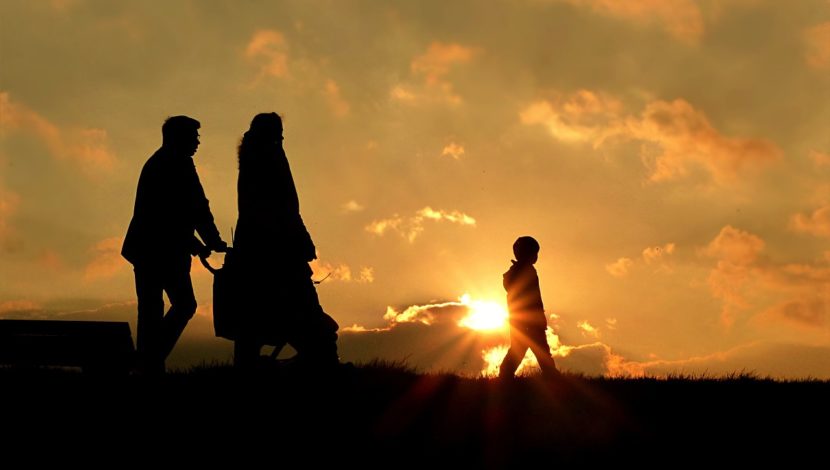The Unitarian Universalist Service Committee advances human rights through grassroots collaborations.
Defining Sanctuary Cities – and Why that Definition Must Expand

By on May 3, 2017
Part one of our Expanded Sanctuary blogs looks at the meaning and limitations of sanctuary cities.
“When I hear the word ‘sanctuary,’ I envision a place that is safe for everyone — regardless of citizenship status, gender, religion, or any other marker that deems one ‘other’ in this country…I envision self-sustaining, well-resourced communities with strong bonds and networks of people who call on each other in times of need.” – Janaé Bonsu, Black Youth Project 100
Today, cities like Chicago, Boston, and New York are proudly re-affirming their commitment to being sanctuary cities for undocumented immigrants in the face of threats to their federal funding from the Trump administration. But what does it actually mean to be a “sanctuary city,” and what does it not mean?
At a basic level, self-declared sanctuary cities publicly refuse to cooperate with Immigration and Customs Enforcement (ICE) in the detention and deportation of undocumented immigrants under most circumstances. However, beyond that, a common definition does not exist; rather, there are different levels of protection for immigrants bundled together under the catch-all term “sanctuary,” with some cities only doing the bare minimum and others providing maximum protection within the boundaries of the law.
Yet the greatest limit of sanctuary cities lies in racist policing practices, which affect both immigrants and U.S. citizens of color. How can a city call itself a sanctuary city if unarmed black men are being shot by the city’s police? What about a sanctuary city that doesn’t ask for immigration status, but does charge undocumented immigrants for driving without a license, resulting in a misdemeanor and their fingerprints being sent to the FBI and ICE? How can we applaud a sanctuary city that has arrest and ticket quotas for crimes of poverty like fare evasion on public transit, and then balances their budget off the backs of its poorest residents, mostly Black and Brown?
Now that the courts have blocked the President’s Executive Order to defund sanctuary cities, cities with a vision to create an environment that is safe and welcoming for all must do more. All of those scenarios are examples of “criminalization.” The best way to build a broader, more inclusive kind of sanctuary city is by listening to the solutions proposed by those most directly impacted by criminalization, who understand intimately what real, lasting change needs to look like.
In an earlier blog post, we took a deeper look at how “criminalization” is used to justify racial bias and inequality by treating entire communities as criminal, or potentially criminal. Criminalization is both symbolic and literal: it works through repeated stereotypes (we all know who is automatically associated with terms like “illegal,” “terrorist,” or “drug dealer”) and through actual arrests that create criminal records (although Black people use marijuana at a similar rate as white people, they are up to eight times more likely to be arrested for it depending on which state they live in).
Criminalization is grounded in “nativism” – a xenophobic nationalism that seeks to protect not only traditional power and wealth, but also white, straight demographic dominance in the United States. Criminalization and discriminatory policies use the same tools towards the same ends whether their target is race, religion, sexual orientation and gender identity, poverty, mental illness, or any other status that pushes groups of people to the margins of society. As Marisa Franco of Mijente explains, “In order to ‘make America great again,’ some of us will have to die, some of us will have to be pushed out, and some of us will have to be silent, malleable, and complacent.”
One clear example is the dozens of state bills introduced in recent years to prevent the fabricated threat of “Sharia law,” a set of Islamic codes guiding moral practice, from being implemented in U.S. courts. Anti-Muslim hate groups claimed that radical Muslims aimed to take over the justice system, but the bills’ originator, attorney David Yerushalmi, suggested an ulterior motive: “If this thing passed in every state without any friction, it would not have served its purpose.” It needed to attract controversy to render Muslims more suspect in the public eye. Notably, as Muslim Anti-Racism Organizer Manzoor Cheema explains, “80 percent of these laws were introduced by legislators that also introduced anti-gay marriage laws, anti-abortion laws, voter suppression laws, anti-immigrant laws, and right-to-work (anti-union) laws.”
Similarly, North Carolina’s infamous anti-transgender bathroom bill of 2016, HB2, also included provisions that revoke workplace discrimination protections based on race, religion, sex, and age. HB2 was a profoundly intersectional bill, raising to light how justifying oppression against one community opens the doors for oppression against all people treated as “other.”
The alt-right advances intersectional politics of hate. The only way to resist is through intersectional politics of love. What does this look like and how can we advocate for this? Stay tuned for our next blog post in this series: Out Intersectional Strategy: Expanded Sanctuary.

